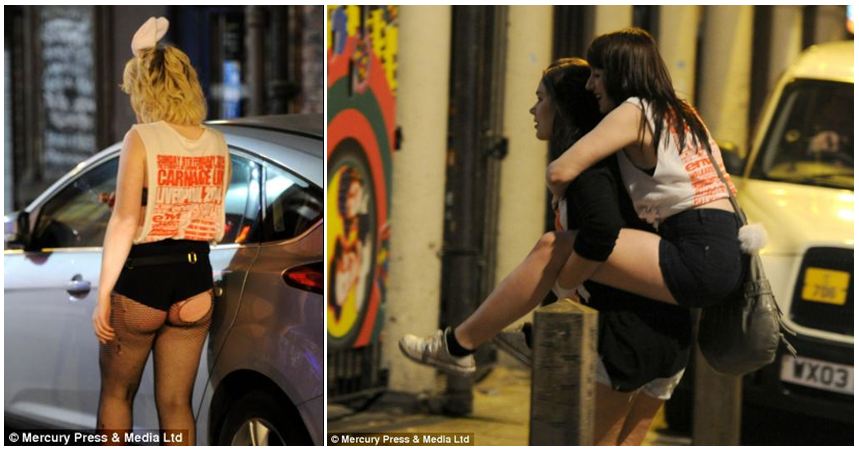At the New Statesman, Rhiannon Lucy Cosslett and Holly Baxter skewer the common media hand-wringing over women who get drunk in public. Above and beyond the victim-blaming “don’t make yourself so rape-able” message, Cosslett and Baxter point out that the tsk-tsking is deeply laden with the idea that women should behave like “ladies.” This, of course, is an old-fashioned notion suggesting that women are or should be the moral superiors of men (invented during the Victorian era). Using a Daily Mail article as an example, they criticize the typical language and imagery that accompanies these stories:
Platell’s piece manages to feature almost every aspect of drunken female behaviour that tabloids simultaneously loathe and desire. Yes, this article has the whole shebang: long lens photos of young women with their fishnets torn up to the bum at a fancy dress party in freshers’ week; phrases like “barely leaving anything to the imagination” and “neo-feminists behaving like men” and creepily voyeuristic descriptions of “pretty young girls lying comatose on the pavement.”
From another point of view, Cosslett and Baxter argue, this looks like “a pretty cracking night out,” stumbles and all. They point out, smartly, that many of these stories frame women’s interest in alcohol as an effort to hang with the boys. The message, they explain, is that ”‘young ladies’ are being warped by the hard-drinking university culture … going along with men’s behaviour because they’re weak-willed and they think it will make them look cool.”


Because men invent things, and then women jump on board because they feel like they have to — that’s the way of the world, isn’t it? It’s not like those of the female variety enjoy a pint, after all, or even — God forbid — enjoy the sensation of drunkenness once in a blue moon. It’s not as though our decision whether or not to drink has anything to do with us or our own lives … modern female binge drinking is still all about the men.
This is not to defend drinking per se, or binge drinking or public drunkenness, but to point out the gendered coverage of the phenomenon, which still portrays women’s drinking as somehow less natural, more worrisome, and more dangerous than men’s.
This post originally appeared on Sociological Images, a Pacific Standard partner site.





